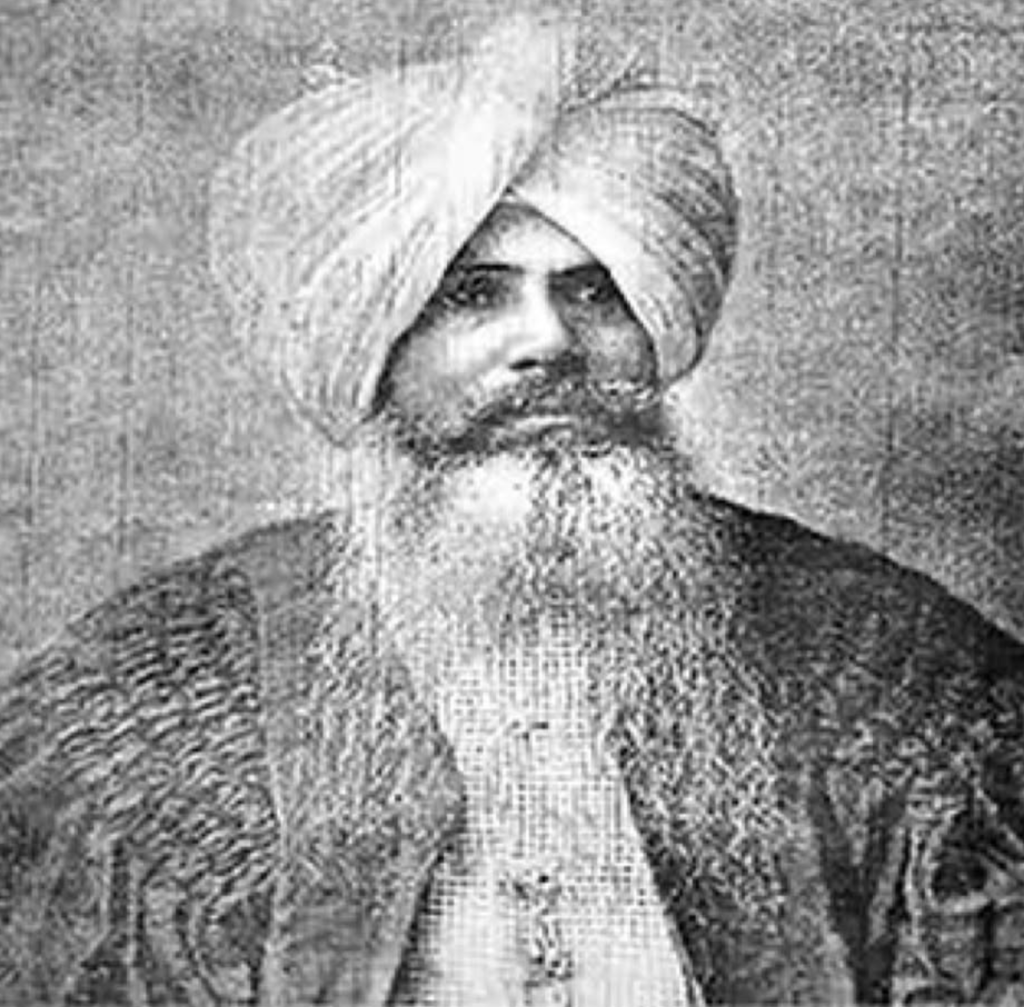BHAGVANA. BHAI, along with Bhai Latkan Ghura, Bhai Gurditta and Bhai Katara, the jeweller, once came to see Guru Arjan and asked for a mantra, or sacred formula. The Guru, as says Bhai Mani Singh, Sikhan di Bhagat Mala, told them that any name for God would save, but they might repeat and meditate upon the word Vahiguru revealed by Guru Nanak as a means of liberation. Bhai Bhagvana and his companions were pleased to be so instructed.
BHANU BHAI, a Bahil Khatri of Rajmahal in the present Santhal Parganah of Bihar, was a devout Sikh of the time of Guru Hargobind. According to Bhai Mani Singh, Sikhan di Bhagat Mala, Bhai Bhanu once asked Guru Hargobind, "0 true king! Different religious books prescribe different paths to be followed such as austerities, pilgrimages, sacrifices, fasting, rituals, knowledge and meditation. Which is the best way to attaining the goal?" The Guru replied, "Cultivate God`s Name with humility, and you will obtain liberation."
BHURIA, BHAI, a resident of Chunian now in Pakistan, was a pious Sikh contemporary of Guru Arjan (1563-1606). As the Guru was once touring the Nakka country, southwest of Lahore, succouring people then living through a severe famine, he according to Giani Gian Singh, Twarikh Guru Khalsa, came to Chunian on his way from Jambar to Bahirval. Bhai Bhuria received the Guru and acquainted him with the hardship the residents were undergoing. The Guru called on Chuhar Mall, the local revenue collector, who was also a disciple. The latter left no stone unturned to provide relief.
BULAKI DAS was the masand or head of the Sikh sangat, at Dhaka, now capital of Bangladesh, during the third quarter of the seventeenth century. Dhaka had been visited by Guru Nanak at the beginning of the sixteenth century when a sangat had emerged in the town. During the time of Guru Hargobind, a Sikh, Bhai Mohan, had kept the Guru`s message alive there. Bhai Nattha, third in succession to Almast, the Udasi saint, who had been sent by Guru Hargobind to preach in the eastern parts, had been deputed to supervise the sangats or Sikh fellowships or communities in Bengal.
CHANDA SINGH, BHAI (1885-1921) was born on 9 Savan 1942 Bk / 22 July 1885, the son of Bhai Hukam Singh and Mat Nand Kaur, a peasant couple of village Nizampur, in Amritsar district. The family shifted westward to Chakk No. 38 Nizampur Deva Singhvala, in a newly colonized district. As he grew up, Chanda Singh, was influenced by the current of Sikh reformation then sweeping the Punjab.
CHUHAR, CHAUDHARl and Puria, both village headmen, attracted by Guru Arjan\'s fame as a holy teacher, once visited him. They said, "0 beneficent one, we have long desired to seek your precept. In our official capacity as village chaudharis, we commit many wrongs and utter many falsehoods. Be pleased to tell us how we can be saved." The Guru answered, "The remedy is simple; discard falsehood, anger and pride." At this Puria argued, "But, Sir, as chaudharis we have so often to tell lies.
DAYA SINGH, BHAI (1661-1708), one of the Panj Piare or the Five Beloved celebrated in the Sikh tradition, was the son of Bhai Suddha, a Sobti Khatri of Lahore, and Mai Diali. His original name was Daya Ram. Bhai Suddha was a devout Sikh of Guru Tegh Bahadur and had visited Anandpur more than once to seek his blessing. In 1677, he travelled to Anandpur along with his family including his young son, Daya Ram, to make obeisance to Guru Gobind Singh, this time to settle there permanently. Daya Ram, already well versed in Punjabi and Persian, engaged himself in the study of classics and gurbani. He also received training in the use of weapons.
DHINGA, BHAI, a barber by profession, became a follower of Guru Nanak. He once came to Guru Arigad, Nanak II (1502-52), and sought instruction. The latter advised him to emulate Sain, famous saint who too was a barber by profession and who had gained spiritual enlightenment by his loving devotion to the Deity.
DITT SINGH, GIANI (1853-1901), scholar, poet and journalist, was an eminent Singh Sabha reformer and editor. He was born on 21 April 1853 at Kalaur, a village in Patiala district of the Punjab. His ancestral village was Jhalliari, near Chamkaur Sahib, but his father, Divan Singh, had migrated to his wife`s village, Kalaur. Divan Singh, a Ravidasia by caste and a weaver by trade, was a religious minded person who had earned the title of Sant for his piety.
FATEH KAUR (d. 1773), popularly known as Mai Fatto, was the wife of Baba Ala Singh, founder of the Patiala family. She was the eldest daughter of Chaudhari Khana, a zamindar of Kaleke, in present day Sangrur district of the Punjab. It is said that at her birth her parents, disappointed at having a female child, put her in an earthen vessel and buried her alive. A holy man, Dyal Das, in the line of Bhai Bhagatu, happening to pass along and, seeing the mother in tears, enquired the cause of her grief.




